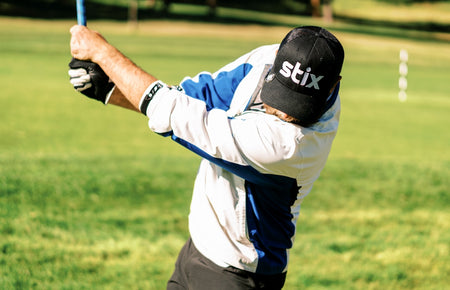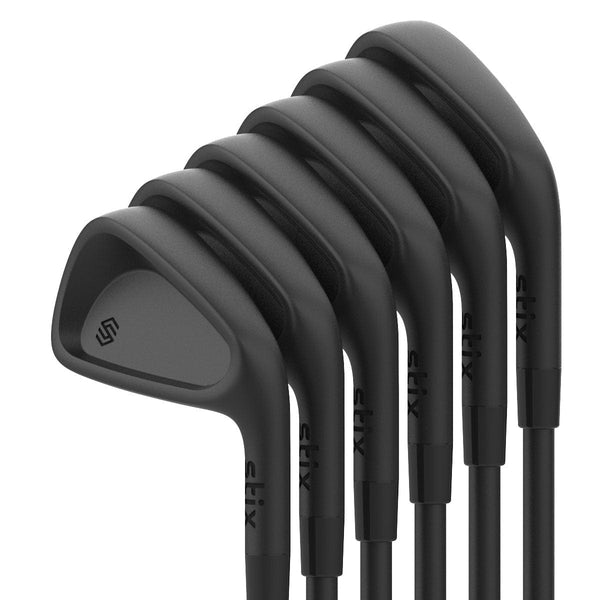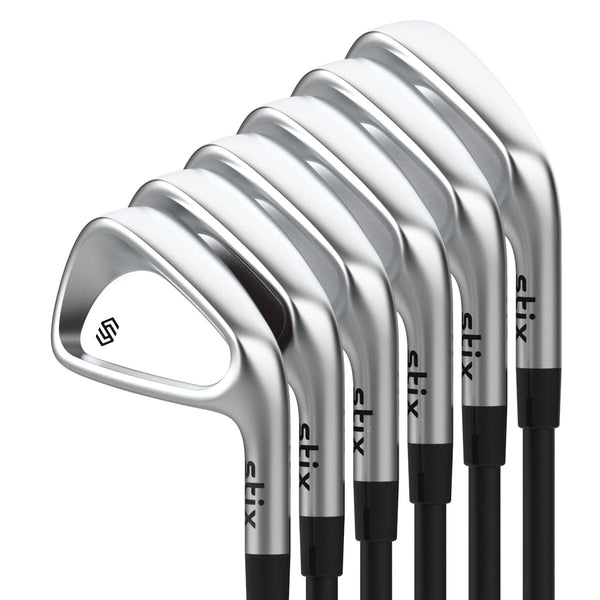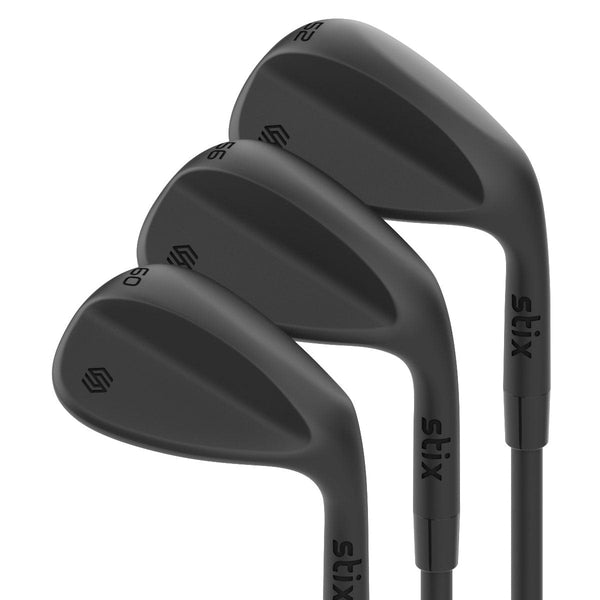Stepping up to the tee with your driver can be pretty intimidating, especially as a beginner golfer. Learning how to hit driver shots takes practice, but the payoff is extremely satisfying when you watch a perfectly aimed shot go soaring 250 yards across the fairway.
In this guide, we'll share essential tips and strategies to level up your driving game. From your grip to your follow-through, we'll break down each component of the swing, helping you unlock the potential of your driver and unleash impressive distance and accuracy off the tee.
Basics of a Driver
A driver is one of the most important clubs in your golf bag. Drivers are for long-distance shots off the tee and are designed to hit the ball the farthest distance among all the clubs. Drivers have large clubheads, long shafts, and low loft angles, all of which allow you to achieve maximum distance off the tee. Learning how to properly swing a driver is really important when you first learn to golf, especially while you work on your alignment and aiming.
Why are Drivers So Hard to Swing?
Drivers can generate a lot of power and distance, but it can be difficult for rookies to nail shots off the tee when first starting out. Here are a few factors that influence the complexity of swinging a driver.
Shaft Length
Drivers almost universally have longer shafts compared to other clubs in the bag, usually around 43 to 45 inches. The longer shaft helps you generate more power and increases clubhead speed, but it also requires more precise control as you swing.
Learn more: Golf Club Length: Which Size Is Right For You?
Take the Stix Find Your Fit Quiz →
Low Loft
Drivers also have a lower loft angle compared to the other clubs, which means there’s less margin for error when striking the ball. Lower loft means that you need to make clean contact with the ball to get the right trajectory and distance.
Off-Center Hits
Off-center hits with a driver can be really bad, resulting in a hook or slice right into the rough or a sand trap. Even with the larger clubface, drivers have a specific sweet spot that’s going to give you the most distance and accuracy possible. Achieving a centered strike consistently requires good technique and practice.
Tee Shots
Drivers are primarily used at the beginning of the round for tee shots, where the ball is elevated on a tee rather than sitting on the ground. This setup requires adjustments to your stance and swing, adding another layer of complexity. Some golfers prefer using 3-woods off the tee for this reason.
How to Hit a Driver More Consistently in 6 Steps
Improving your consistency with the driver involves a combination of technique, practice, and understanding your swing. Here are some tips to help you hit the driver correctly and consistently.
1. Pick the right tee height
Ensure the ball is teed up at the best height for you. For most golfers, half of the ball should be above the crown of the driver at address, but you might find a different tee height works better for you. We’ve found that 4-inch tees work best for drivers with large club heads, like 460cc drivers. Experiment with tee height to find what works best for your swing and your driver.
2. Work on the proper alignment and stance
Proper alignment sets the foundation for a consistent swing. Align your body, feet, hips, and shoulders parallel to the target line (the imaginary line from your ball to your target). Don’t forget your head and neck! With the proper alignment, your head and neck should be positioned directly over the ball.
Your hips should be a little wider than shoulder-width apart for driver shots to provide a solid foundation and full range of motion. Make sure the ball is aligned inside your front heel (for right-handed golfers). Slightly tilt your spine away from the target to help promote an upward strike on the ball.
3. Find the right grip
Maintain a neutral grip that allows the driver clubface to square up at impact. The club should sit diagonally across the fingers of your left hand (for right-handed golfers), and the grip should run from the base of your pinky finger, across the palm, and come out just below the pad of your index finger. The "V" formed by your thumb and index finger should point toward your right shoulder.
With your left hand in place, bring your right hand to the club. The grip should rest mainly in the fingers of your right hand, with the palm facing your left side (for right-handed golfers). The pinky finger of your right hand should overlap the gap between the index and middle fingers of your left hand. You can also interlock the pinky finger of your right hand with the index finger of your left hand.
5. Focus on your swing mechanics
Focus on maintaining a smooth and rhythmic tempo throughout your swing. Start the swing with a controlled takeaway, moving the club away from the ball smoothly. Avoid any jerky or abrupt movements. As you hinge your wrists and rotate your shoulders, aim for a gradual increase in clubhead speed. The backswing should feel unhurried and synchronized, with a consistent rhythm.
As you reach the top of your backswing, initiate the transition to the downswing by seamlessly shifting your weight from your back foot to your front foot. As you start the downswing, gradually increase the speed of your arms and hands, allowing the club to gather momentum. Don’t rush the downswing because it will disrupt your tempo and your alignment.
Aim to swing the club on a shallow, slightly upward path through impact. This helps optimize launch angle and reduces backspin for maximum distance. Keep your head relatively still throughout the swing. Avoid excessive head movement, which can lead to inconsistent contact. Complete your swing with a full and balanced follow-through. Allow your body to rotate toward the target, with your belt buckle facing the target at the finish.
6. Practice, practice, practice
Spend time practicing with your driver on the driving range, on the course, and even at home. Work on your launch angle and experiment with different aspects of your swing to find what works best for you. Consider investing ina launch monitor or going to an indoor golf simulator to work on your driver swing.
What is the Most Forgiving Driver?
A 460cc driver is by far the most forgiving driver for beginners and high-handicappers alike. Because it has the largest allowable clubface in golf, the sweet spot tends to be larger than other driver sizes. A larger sweet spot means that off-center hits are less punishing, resulting in more forgiving shots that still travel relatively straight and with reasonable distance. Beginners also enjoy a bit more distance with a 460cc driver which can help improve confidence on the course.
Learn more about the Stix all black 460cc Driver →
Average Driver Distances
Your swing speed, launch angle, spin rate, and strike quality can all influence ball flight, especially with a driver. Here are some general guidelines for average driving distances based on gender and handicap level. Remember–these are only baseline characteristics.
Learn more: Golf Handicap Explained (A Beginner’s Guide)
|
Male Golfers |
|
|
High Handicap (20+) |
200-240 yards |
|
Mid Handicap (10-19) |
240-275 yards |
|
Low Handicap (0-9) |
275-310 yards |
|
Female Golfers |
|
|
High Handicap (30+) |
150-180 yards |
|
Mid Handicap (20-29) |
180-210 yards |
|
Low Handicap (10-19) |
210-240 yards |
Driving to Success
Remember, consistency is key when it comes to hitting farther and straighter with your driver. Take the time to refine your technique, experiment with different adjustments, and embrace the process of improvement. With regular practice, you can step into the tee box with confidence. Trust in your abilities, stay focused on the fundamentals, and let your driver do the talking.
Sometimes a new, forgiving set of golf clubs can give you the boost of confidence you need. Grab a set of modern, forgiving golf clubs from Stix and enjoy the best golf game of your life. Our golf club sets feature our sleek 460cc driver that helps you play better golf and look good doing it. What’s not to love?
Shop all Stix golf club sets →
You might also like:






